
Summer has definitely returned, but not before a highly successful Walter O. Wells Invitational occurred last week. I also would like to give a special thanks to our staff. I am very proud of the product they have produced for throughout the year, and can only think of one word to describe them: Awesome! Throughout the next few weeks most of them will be leaving us for the season and will be missed until they return in April 2024. So a huge thank you/muchas gracias to Adam, Ron, Tevin, Jim, Paul, Larry, Dave, Matt, Jack, Donis, Mitch, Yony, Issac, Aryton, Andrew, Ethan, and Dylan for all your hard work this year. Also a special thanks to Tom Thome and Tom Zimmerman for their help mowing fairways last week. Very much appreciated!
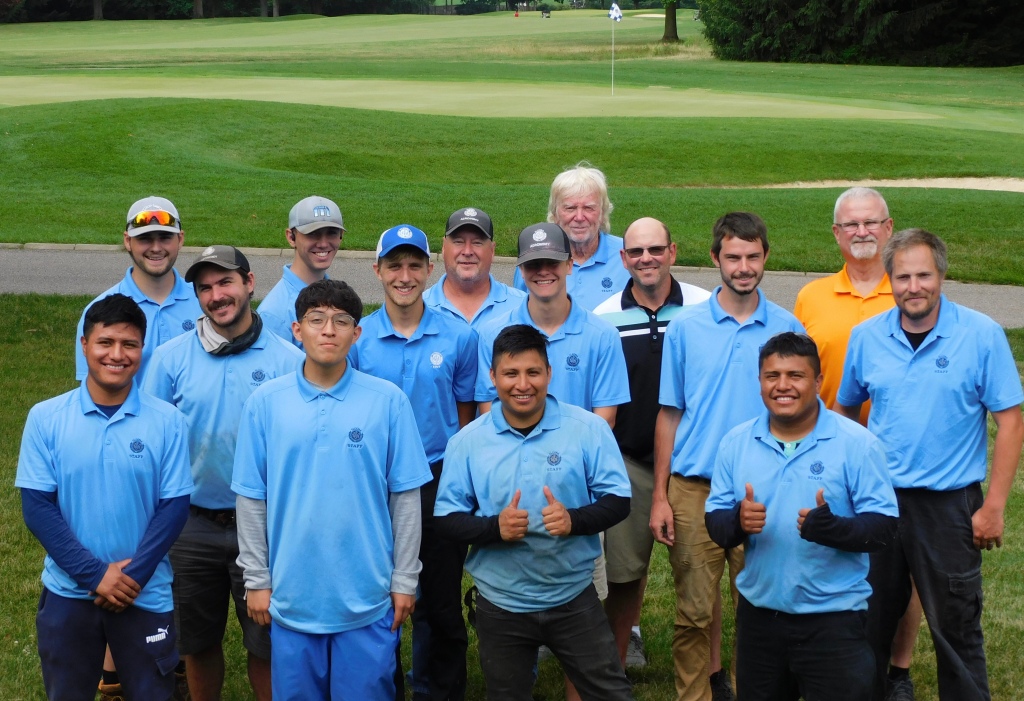

The popular motto “defense wins championships” rings true, not just in sports, but in turf management as well. It’s not necessarily what we do when the heat and humidity arrives, but more about what we don’t do. For example, for a majority of the year we have experienced cooler to average weather. This, combined with some changes I have made in our maintenance and agronomic practices, has allowed for some spectacular playing conditions.

So, what does defense mean in agronomic terms? The height of cut on greens has been raised slightly (from .11″ to .115″) to increase the amount of leaf tissue on the plant giving it a better opportunity to generate the necessary energy to survive. If necessary, a mowing day may be skipped and replaced by rolling to reduce stress. Irrigation is kept to a minimum as well. The need to minimize the amount of irrigation may sound counter-intuitive because of the heat, but we need to reduce the possibility of various types of diseases from developing. Moist soils, thatch and leaf blades make an ideal environment for pathogens to grow and create harm to the turf. By reducing the irrigation, we reduce the moisture available to the pathogen. On days when we don’t mow fairways the dew is mechanically removed by two carts dragging a long hose across the playing surface to knock the dew off of the leaf blades allowing them to dry more quickly. In periods like this, every little trick helps.
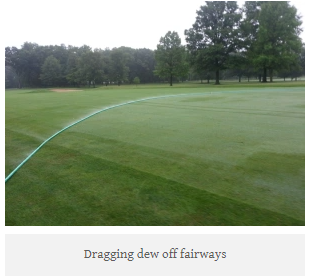
Plant protectants and growth regulators are helping us as well, although they are not as effective during periods of high temperatures and humidity. The humidity combined with these defensive measures listed above will lead to some decreased green speed, with the added moisture in the air being taken up by the plant, creating larger leaf blade surfaces.
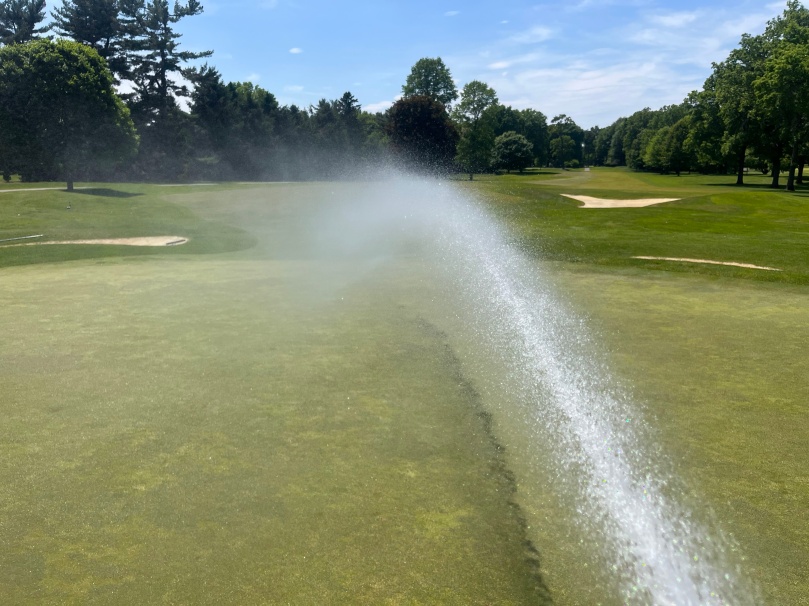
Many afternoons have the staff and I syringing the greens turf to help cool it down. When temperatures get above 85 degrees, Poa annua has difficulty photosynthesizing (making energy), and uses more energy then it can produce, causing stress damage. By applying a fine amount of water, the turf is temporarily cooled off to relieve some of that stress. This syringing creates the same effect as your skin feels if you ran quickly through a sprinkler.
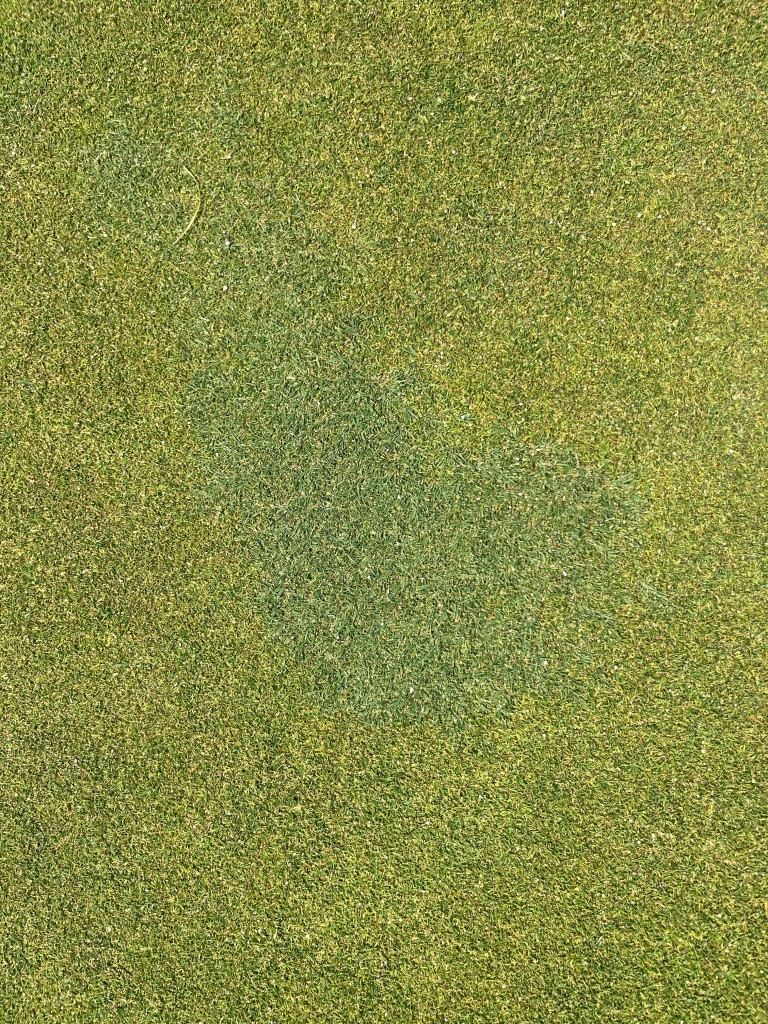
The picture below is 15 green taken with a thermal camera, and notice that the higher heights of turf are 10-20 degrees cooler than the green, and that the 100 degree canopy temperature on the greens turf is only cooler than the metal on my cart, which measured at 114 degrees. The lower height of cut on the turf, the higher the canopy temperatures can be and the need for our syringing.
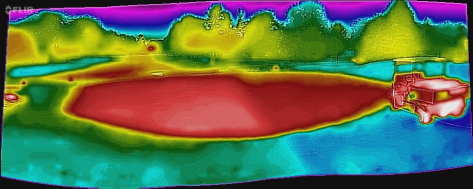
The great news is that the heat wave and humidity is expected to return to more manageable levels by the start of next week. Please keep in mind that these changes are only intended to be temporary and that the ultimate goal is to provide you with a golf course that you can be proud of year round. With that being said, until the heat and humidity begin to drop, we will continue to play defense. As always, I encourage all of you to please contact me with any questions or concerns at ryan@elconacc.com. Thanks, and have a great rest of your week!

Ryan




